Here's the test bench where the prototype and final projects are performed. On the right is the documentation creation to be printed out for a manual.
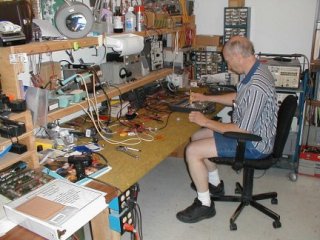
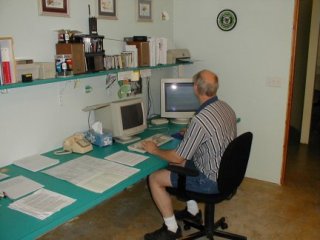
On the left side of the shop drafting and general operating happens when time permits. Just on the far edge of the picture is one of the equipment racks for the station; in this case, SRG 147.20 repeater. And yes, the floor is clean. A professional type setup.
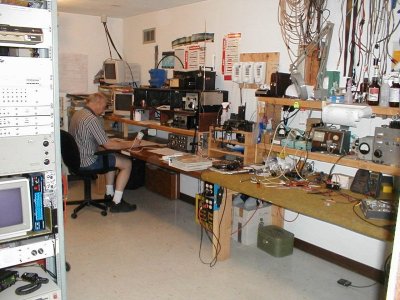
When a new (or repaired) station is ready to go to a remote high site staging is performed for a few days or weeks to ensure the equipment is working properly. Here's shows an example of a (old) GE station being tested in the "lab" which is just a (multi-use) painting room. This is one of two "short" racks for those tasks. It' better than laying all of the stuff on the bench which takes up valuable space. Plus, the rack is on wheels so it can move it to the bay for other tests, and loading, etc.
Starting from the top is the Bp duplexer (needed in high RF areas) as apposed to a "BpBr" one which really is not very band-pass, because it's not a goes-in, goes-out on the coaxial jumpers. Next, is a little shelf that was used to used to lay a laptop PC. Next, is the controller, then the GE Mastr-II repeater with it's power supply. It's stock (non-SRG mods) That and some of the other components are rather heavy.
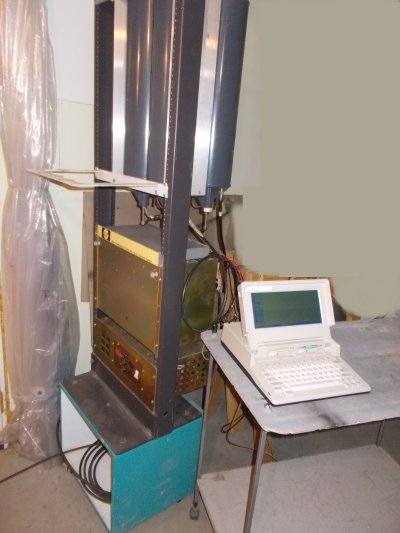
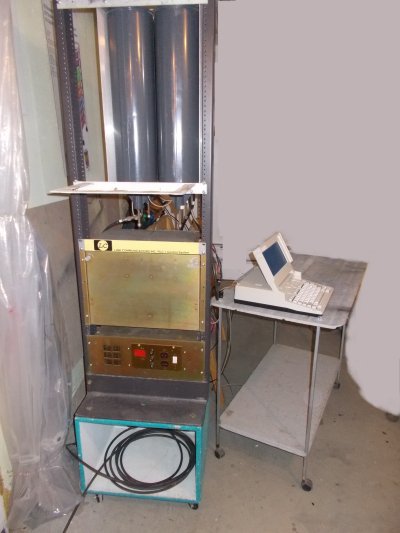
This is a typical "test station" for SRG equipment where two radios for different purposes, but for the same remote site is load tested for power out, heat dissipation and FCU cycle/operation.
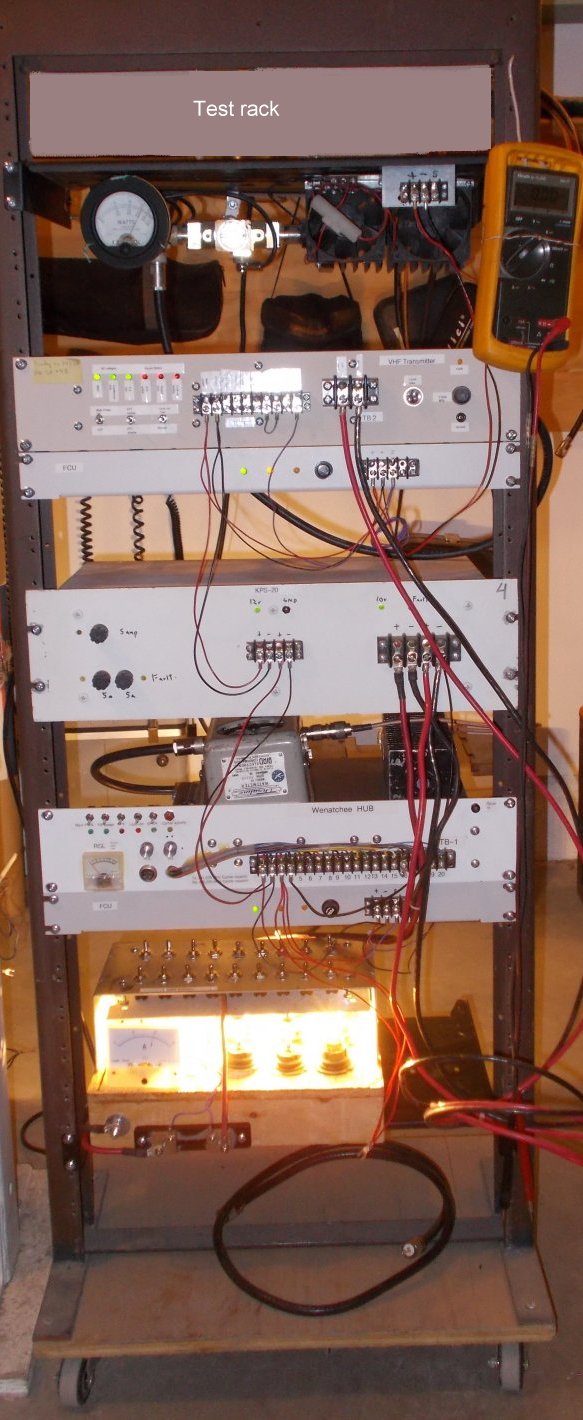
During prototype building and general communications equipment maintenance the Author is evaluating several products for cleaning. Starting from the left is denatured alcohol, CRC cleaner 2000, CRC cleaner QD, Puretronics cleaner 3500, Deoxit D5, Deoxit F5, NXT (air) duster.
The denatured alcohol is a mix of ethanol and methanol according to the SDS so practice caution if handling it a lot without gloves.
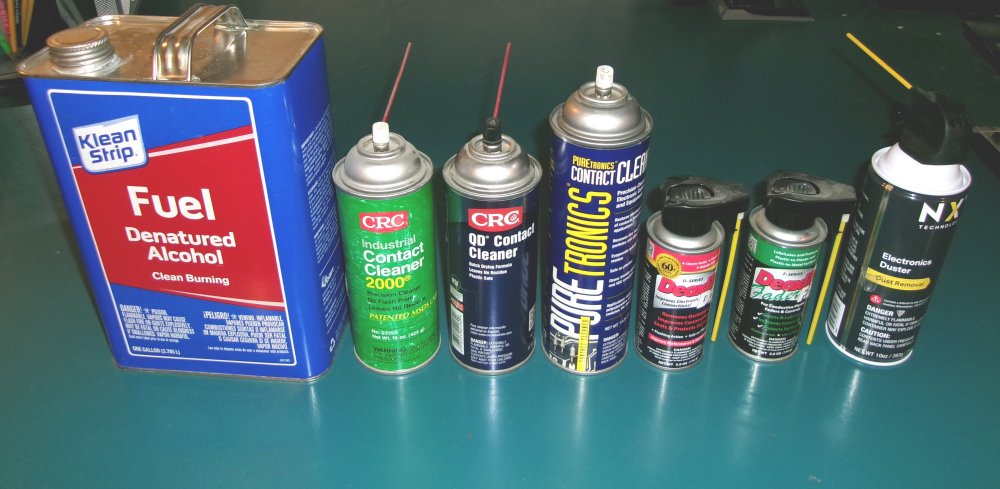
Back to the SRG tech page
![[SRG home Direction]](images/srghome.gif)